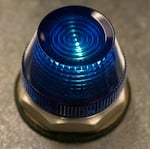My RM5200 O2 has had all the usual problems.
a) The occasional "oh no you touched me now I won't boot without the jumper trick".
b) The occasional ECC failure. Generally near the top DIMM slots.
- Looks like one DIMM indeed has a missing decoupling cap
- Always suspected thermal issues near the top slots.
My O2 hasn't been powered on or even plugged in in a long while.
Instead of admiring the box, I figured it was time to clean the DIMM slots to try to isolate/fix ECC errors so I could enjoy the O2 again.
Plug it in and now there's nothing on the power LED at all.
Which of course implies PSU trouble.
http://techpubs.sgi.com/library/tpl/cgi-bin/getdoc.cgi?coll=hdwr&db=bks&fname=/SGI_EndUser/books/O2_OG/sgi_html/ch04.html
And no, none of the obvious things helped. (Removing modules, reinserting logic board, the jumper trick, etc.)
I disassembled the PSU. It's Rev N.
There's nothing immediately obvious. No scorch marks. No leaking electrolyte. No bulged/popped caps.
But from experience I know that electrolytic caps go bad often without visible indication.
And this O2 PSU is clearly designed to bake its caps.
I'm no PSU design or repair guru, but I've fixed my share of game console and arcade board/PSU.
This thread was most intriguing:
http://forums.nekochan.net/viewtopic.php?f=3&t=16726251&p=7353975
because when I trigger the PSU via the blue wire (i.e. fan running), unloaded and disassembled, the yellow wires read 5.6V instead of 3.3V.
The other 3.3V rails are fine.
The +12V, -12V are fine.
The red +5V is a little high (5.40V), but again, this is under no load so it's fine.
So is the O2 smart enough to see this (i.e. is there an Over-Voltage Protection circuit?) and that's why it's not powering up?
There's a whole row of diodes/regulators on the second heat sink. Is it fair to assume the yellow wire 3.3V rail is being generated from the 5V rail? (i.e. one of these could be dead and letting a full 5V through instead of 3.3V)
Thanks to the compact design, the final electrolytic caps are also so close to these power transistors/diodes you can't even read most of their part numbers, and again, that means the PSU is designed to bake its caps, which also isn't fun. (This is also a common problem in arcade audio boards and a few consoles like TurboDuo.)
Is anyone here adept at analyzing and repairing O2 PSUs? I could always resort to buying one off ebay (like the Rev A1s I often see. yeesh, would you trust that revision knowing there's a rev N?), but then I'd have the broken one lying around forever, without the heart to add more junk to a landfill that could be repaired.
a) The occasional "oh no you touched me now I won't boot without the jumper trick".
b) The occasional ECC failure. Generally near the top DIMM slots.
- Looks like one DIMM indeed has a missing decoupling cap
- Always suspected thermal issues near the top slots.
My O2 hasn't been powered on or even plugged in in a long while.
Instead of admiring the box, I figured it was time to clean the DIMM slots to try to isolate/fix ECC errors so I could enjoy the O2 again.
Plug it in and now there's nothing on the power LED at all.
Which of course implies PSU trouble.
http://techpubs.sgi.com/library/tpl/cgi-bin/getdoc.cgi?coll=hdwr&db=bks&fname=/SGI_EndUser/books/O2_OG/sgi_html/ch04.html
And no, none of the obvious things helped. (Removing modules, reinserting logic board, the jumper trick, etc.)
I disassembled the PSU. It's Rev N.
There's nothing immediately obvious. No scorch marks. No leaking electrolyte. No bulged/popped caps.
But from experience I know that electrolytic caps go bad often without visible indication.
And this O2 PSU is clearly designed to bake its caps.
I'm no PSU design or repair guru, but I've fixed my share of game console and arcade board/PSU.
This thread was most intriguing:
http://forums.nekochan.net/viewtopic.php?f=3&t=16726251&p=7353975
because when I trigger the PSU via the blue wire (i.e. fan running), unloaded and disassembled, the yellow wires read 5.6V instead of 3.3V.
The other 3.3V rails are fine.
The +12V, -12V are fine.
The red +5V is a little high (5.40V), but again, this is under no load so it's fine.
So is the O2 smart enough to see this (i.e. is there an Over-Voltage Protection circuit?) and that's why it's not powering up?
There's a whole row of diodes/regulators on the second heat sink. Is it fair to assume the yellow wire 3.3V rail is being generated from the 5V rail? (i.e. one of these could be dead and letting a full 5V through instead of 3.3V)
Thanks to the compact design, the final electrolytic caps are also so close to these power transistors/diodes you can't even read most of their part numbers, and again, that means the PSU is designed to bake its caps, which also isn't fun. (This is also a common problem in arcade audio boards and a few consoles like TurboDuo.)
Is anyone here adept at analyzing and repairing O2 PSUs? I could always resort to buying one off ebay (like the Rev A1s I often see. yeesh, would you trust that revision knowing there's a rev N?), but then I'd have the broken one lying around forever, without the heart to add more junk to a landfill that could be repaired.














 -
-










